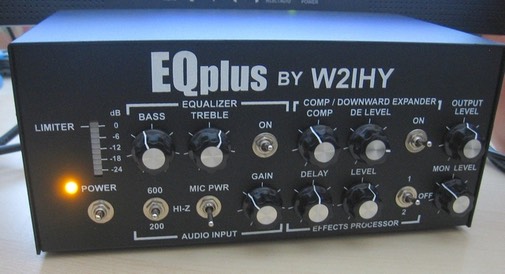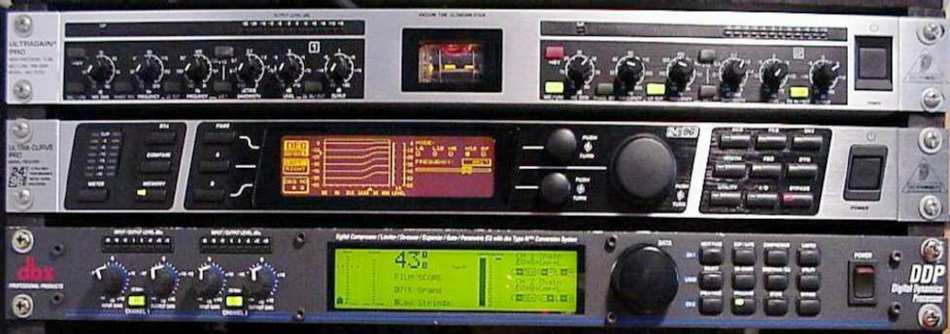
Just about any mic with a 1/8th (3 mm) plug can be used with the KX2 or KX3. To turn CW-in-SSB on, tap the PRE ('1') switch while in the CW WGHT menu entry. Many of have successfully completed (or initiated) a cross-mode QSO in this manner. This feature is particularly useful on 6 meters with fleeting band openings. With the CW-In-SSB feature turned on, you don't even have to change modes: just hit the key or keyer paddle and start sending. There are times when you can't quite complete an SSB QSO due to fading, and switching to CW has an advantage. Bonus feature: If the OFS/VFO B knob is in the OFS setting (OFS LED lit), you can use the VFO B knob to move VFO A in coarse steps while leaving the VFO A knob itself set for fine steps (10 Hz). In SSB mode, your choices are 0.1, 0.5, 1.0, and 2.5 kHz per step. Using the VFO CRS menu entry, you can select coarse VFO tuning steps independently for each operating mode. In dual watch mode (MENU:DUAL RX), you can listen to your VFO A and B frequencies at the same time, with VFO spacing wide enough to work most SSB DX stations operating split. You can use this to advantage during normal operation by setting the AFX MD menu entry to "DELAY" - this simulates stereo receive audio, giving voice signals a warm, rich sound.

#ESSB AUDIO SETTINGS FULL#
The KX2 and KX3 are among very few radios that provide full stereo to the headphone jack. This is helpful if you're having a conversation with more than one station at a time, where each signal is a little off, such as on a net. The beauty of RIT is that it only changes your *receive* frequency, leaving your transmit frequency fixed. It is often called a "clarifier" because it allows you to tune in signals that are a bit off-frequency. Many small transceivers don't provide this important feature. NR can relieve the fatigue of listening to weak signals on a noisy band. NR on the KX2 and KX3 can be adjusted using a single knob function, from completely a completely "dry" mix (no NR applied) to 100% "wet" (all NR). Hold the NTCH switch on the KX3, or hold APF-AN on the KX2. If a carrier (sometimes called a "tuner-upper") appears, you can use remove it using auto-notch. Use the PBT I/II controls on the KX3, or tap FIL on the KX2 and use the two knobs above the switch. In SSB modes this low-cut/high-cut method is the default. When interference is heavy, you can often eliminate it by cutting the low or high end of the audio range. (Again, make sure the additional bandwidth consumed doesn't interfere with adjacent signals - e.g., don't use it in a contest.) Typically ESSB is used at both ends of a QSO, by agreement of both operators. It allows you to transmit with a passband of up to 4 kHz wide (wider than the usual maximum of about 2.8 kHz). If you're on a lightly used band and would like to experiment with higher-quality audio, give ESSB a try. Using the built-in mic, you can operate the KX2 like any handheld.

The KX2 is the world's smallest all-HF-band, all-mode "HT". Use the CMP switch on the KX3 (TX CMP menu entry on the KX2) to dial in compression of up to 30 dB.Ĩ-band graphic equalizers (MENU:RX EQ and TX EQ) can be used to tailor the receive and transmit audio to your liking. As with the K3/K3S, our KX-line compression algorithm is exceptionally clean.

Speech compression can add a lot of "punch" to your low-power signal, bringing up average voice power. The auto-repeat interval can be set using the MSG RPT menu entry. To auto-repeat a played message, just hold the '1' or '2' switch rather than tap it. These are especially useful during contests or SOTA operation, allowing you to store a CQ message, your call, or an exchange. You can record and play back two 15 second DVR messages. Some are pretty much unheard of in other radios in this class. Our KX2 and KX3 transceivers have many standard features targeted specifically at SSB operation.



 0 kommentar(er)
0 kommentar(er)
